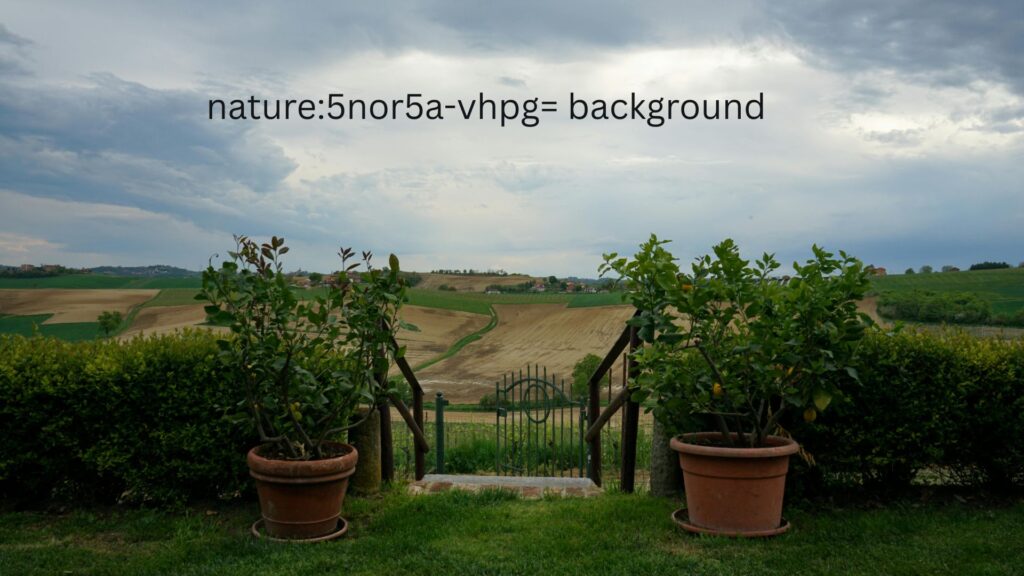In the evolving world of digital creativity, photographers are always searching for new ways to bring authenticity and tranquility into their visuals. One trend making waves is the use of nature:5nor5a-vhpg= background — a term that represents natural textures, organic tones, and environmental-inspired backdrops. Whether used in digital post-production or real-life settings, this aesthetic helps photographers capture the soothing and timeless essence of nature.
Understanding the nature:5nor5a-vhpg= Background
The nature:5nor5a-vhpg= background isn’t just a random design element — it symbolizes the artistic fusion of nature’s beauty with modern digital art. Typically, this type of background features muted greens, earthy browns, soft blues, and gentle gradients that mirror the calm of natural landscapes.
Photographers who use this aesthetic aim to evoke serenity and connection with nature. By incorporating nature:5nor5a-vhpg= background into projects, creators can elevate even the simplest composition into something peaceful and visually immersive. It reflects an organic look that feels both timeless and contemporary, making it ideal for editorial shoots, product photography, or digital portfolios.
Why Choose a Natural Aesthetic in Photography
Natural aesthetics have always been at the heart of great photography. The nature:5nor5a-vhpg= background taps into this universal appeal by bringing the outdoors into every frame.
A natural aesthetic can transform an image’s mood — giving it authenticity, warmth, and emotional depth. It’s particularly effective in lifestyle and portrait photography, where the background must complement rather than compete with the subject.
There’s also a psychological side to it. Studies show that natural colors and organic visuals can evoke calmness and relaxation. When viewers see a photo enhanced with the nature:5nor5a-vhpg= background, they often feel a subtle connection to the environment — even if the image is digitally composed.
In essence, choosing this background is about more than style; it’s about storytelling. It allows photographers to share not just a subject, but a mood — something peaceful, grounded, and real.
How to Incorporate nature:5nor5a-vhpg= Background Effectively
Using the nature:5nor5a-vhpg= background successfully requires balance and technical finesse. Whether working with real outdoor scenes or digital overlays, here’s how photographers can make the most of it.
1. Pay Attention to Lighting
Lighting can make or break any photo, especially when using a nature-inspired backdrop. Soft, diffused lighting often works best. Photographers can shoot during the golden hour to capture warm tones that complement the nature:5nor5a-vhpg= background, or use natural window light for indoor portraits. The goal is to enhance depth and dimension without washing out the subtle textures of the background.
2. Perfect the Composition
Composition plays a major role in balancing the subject and the nature:5nor5a-vhpg= background. The background should enhance, not distract. Placing the subject slightly off-center, applying the rule of thirds, and using leading lines from the environment can create harmony between the person or object and the backdrop.
3. Editing for Harmony
Post-processing helps fine-tune the final look. In editing software like Lightroom or Photoshop, minor adjustments to contrast, color saturation, and clarity can enhance the organic tones. However, moderation is key. The nature:5nor5a-vhpg= background should feel authentic — not overly manipulated. Too much editing can remove the natural charm that defines this aesthetic.
4. Maintain Color Balance
Color harmony ensures the subject fits naturally within the frame. Matching wardrobe or prop tones with elements of the nature:5nor5a-vhpg= background creates a cohesive visual experience. For instance, earthy beige or muted green clothing pairs beautifully with a natural backdrop, reinforcing a grounded, unified feel.
Creative Ideas for Using nature:5nor5a-vhpg= Background
Photographers can explore countless ways to integrate the nature:5nor5a-vhpg= background into their creative process. Here are a few inspiring ideas:
1. Minimalist Portrait Sessions
Natural backgrounds are perfect for minimalism. A simple portrait shot against a soft-textured nature:5nor5a-vhpg= background allows the subject’s emotions and features to take center stage. The background acts as a subtle frame, highlighting facial expressions and natural light details.
2. Eco-Friendly Brand Campaigns
Brands promoting sustainability or eco-conscious values often prefer earthy visual tones. Using a nature:5nor5a-vhpg= background in product photography can strengthen that message, aligning the visuals with the brand’s identity. It suggests purity, responsibility, and harmony with nature.
3. Lifestyle and Travel Photography
When capturing outdoor adventures or lifestyle moments, this background can enhance realism and depth. Whether it’s a forest, beach, or mountain-inspired tone, the nature:5nor5a-vhpg= background adds a layer of context and atmosphere to storytelling photography.
4. Digital Art and Collage Projects
In digital art, overlays using nature:5nor5a-vhpg= background textures can produce stunning hybrid compositions. Artists often blend these organic patterns with geometric or abstract elements to create visually striking results that combine natural and modern aesthetics.
Common Mistakes to Avoid
Even though the nature:5nor5a-vhpg= background offers creative freedom, it’s easy to misuse it without understanding balance. Here are some pitfalls to avoid:
1. Overediting
One of the most common mistakes is over-saturation or applying heavy filters. Doing so can distort the natural tones that define the background’s charm. Keeping edits light maintains the authenticity of the scene.
2. Ignoring Subject-Background Contrast
If the subject’s colors are too similar to the background, the image may lack visual distinction. Ensuring proper contrast through lighting or clothing choice prevents the subject from blending in too much.
3. Unnatural Lighting
Harsh artificial light can ruin the soft, organic appeal of the nature:5nor5a-vhpg= background. Photographers should favor warm, natural lighting to preserve the realistic tone and feel.
4. Using Low-Resolution Backgrounds
If working digitally, always use high-quality versions of the nature:5nor5a-vhpg= background. Blurry or pixelated backdrops can make even the best compositions look unprofessional.
Technical Tools and Settings Recommendations
For those who want to achieve the best results, certain tools and settings can enhance the effect of nature:5nor5a-vhpg= background in photography:
- Aperture: Use a wide aperture (f/1.8 – f/3.5) to achieve a smooth depth of field, keeping the background soft but visible.
- ISO: Keep ISO low (100–400) to maintain clean image quality with natural light.
- White Balance: Adjust manually for accurate color tones that align with the nature aesthetic.
- Editing Tools: Lightroom’s “Tone Curve” and “Color Grading” panels help achieve earthy, balanced hues.
By using these settings, photographers can ensure their images appear naturally balanced and aesthetically aligned with the nature:5nor5a-vhpg= background theme.
Why nature:5nor5a-vhpg= Background Appeals to Modern Creatives
In a digital world saturated with artificial effects and high-contrast visuals, the nature:5nor5a-vhpg= background stands out for its simplicity. It resonates with photographers who value mindfulness, calmness, and authenticity.
This aesthetic isn’t just about visual beauty — it’s also about emotional storytelling. Viewers often connect with images that reflect natural harmony. For social media creators, artists, or brand photographers, using a nature:5nor5a-vhpg= background can establish a consistent and relatable visual identity.
Conclusion
The nature:5nor5a-vhpg= background offers photographers a timeless and flexible tool to infuse their work with the calm and authenticity of nature. From minimalist portraits to professional branding campaigns, its earthy tones and organic textures create visuals that feel both modern and soulful.
By mastering lighting, composition, and editing, photographers can achieve a natural aesthetic that connects deeply with viewers. As creativity continues to evolve, integrating nature-inspired backdrops will remain one of the most powerful ways to bring balance and beauty into visual storytelling.
In a world craving authenticity, the nature:5nor5a-vhpg= background reminds creators that sometimes, the most impactful art begins with nature itself.

